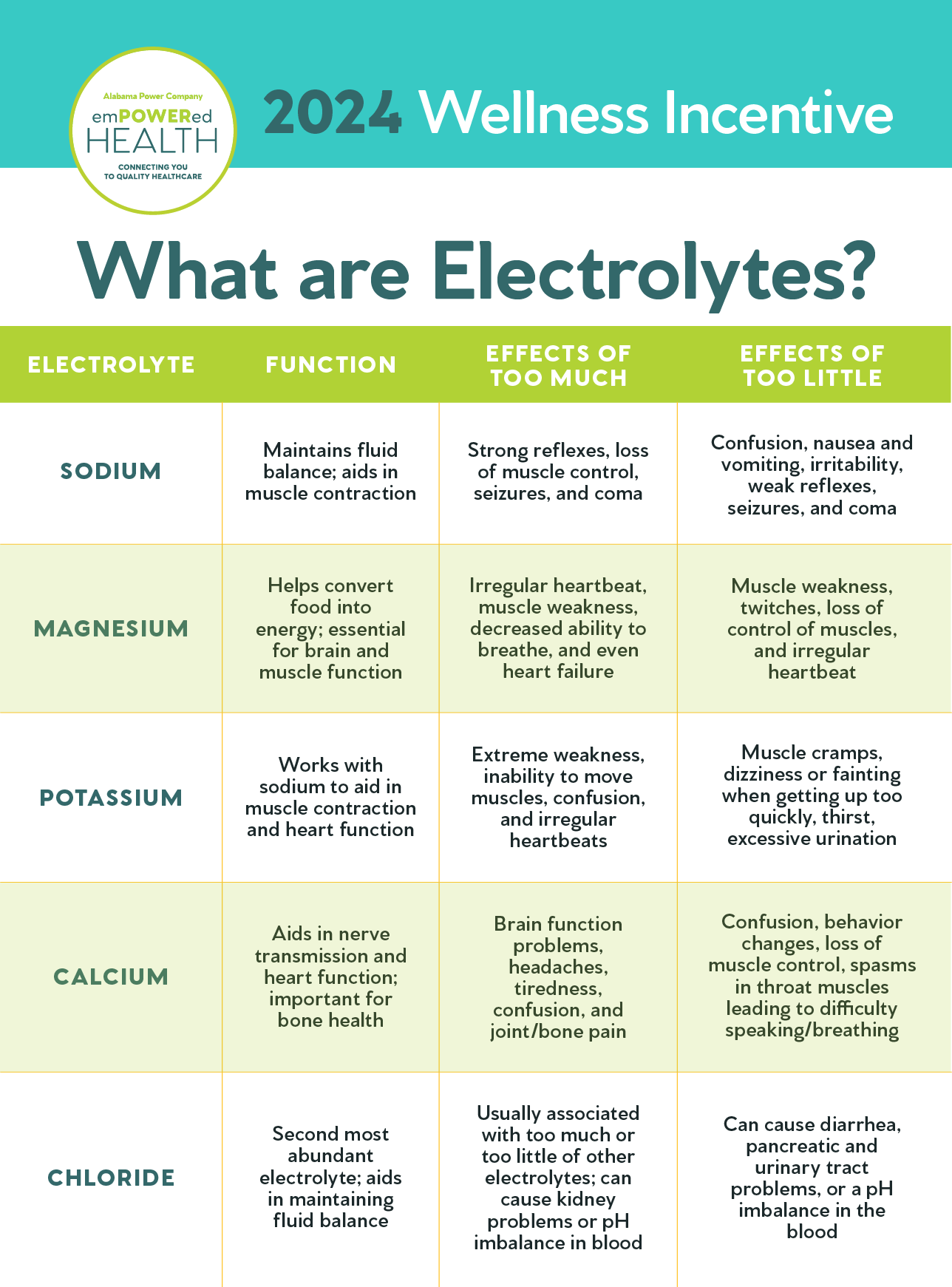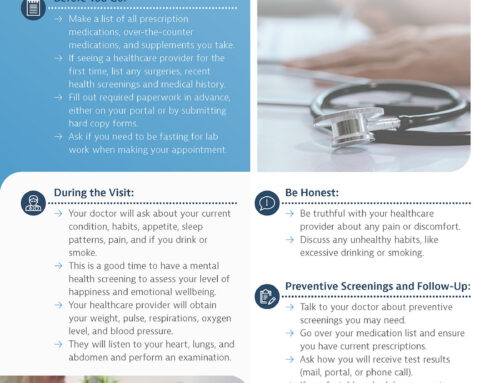Of all the substances contained in our blood, the ones that receive a lot of attention are electrolytes. There aren’t many drink, food, or supplement advertisements that don’t boast about their product’s electrolyte content. “This drink has 50% more of (a particular electrolyte) than all other brands…” is a common promotional claim. We might believe these claims without ever stopping to think, “How much do I need?” or “Am I getting enough of these electrolytes on a daily basis?”
An adult’s body is roughly 60% water. Your cells all contain water and electrolytes that come from the fluids and foods we consume. Electrolytes have a naturally occurring positive or negative charge when they are dissolved in water to balance each other out. These charges are what causes your muscles to contract. They also help with your body’s hydration and the delicate balance of fluids inside and outside your cells.
However, in the event you experience symptoms like nausea, vomiting, diarrhea, or severe sweating from increased activity, you may need to supplement with electrolytes.
During your annual physical, your healthcare provider may draw blood for lab tests that include looking at your electrolyte level. The below chart outlines the electrolytes your physician will pay close attention to when reviewing your lab results, the key function for each electrolyte, and how electrolyte imbalances commonly present themselves.

Healthy lifestyle choices can lower the risk of coronary artery disease. By eating a healthy diet, exercising most days of the week, losing excess weight, and stopping smoking, one can lower their risk of cardiac disease and having heart disease. Talk to your healthcare provider about steps you can take to get started on a path to healthier heart health. For more information on how to live a heart-healthy lifestyle click here.




